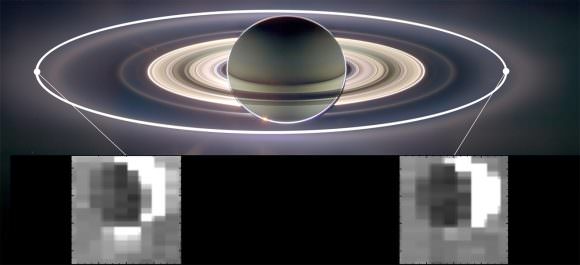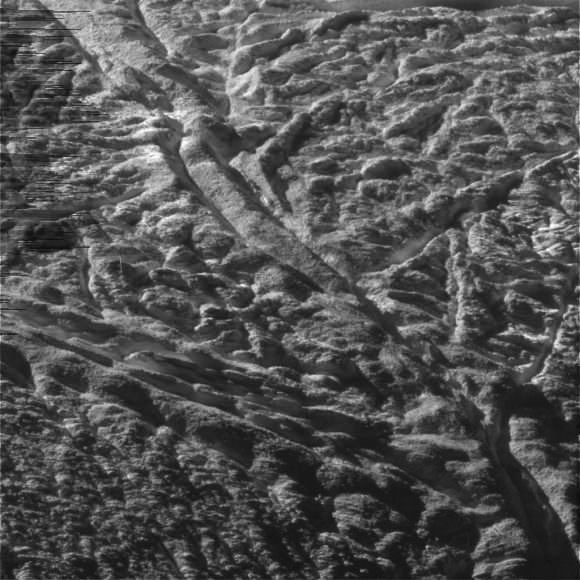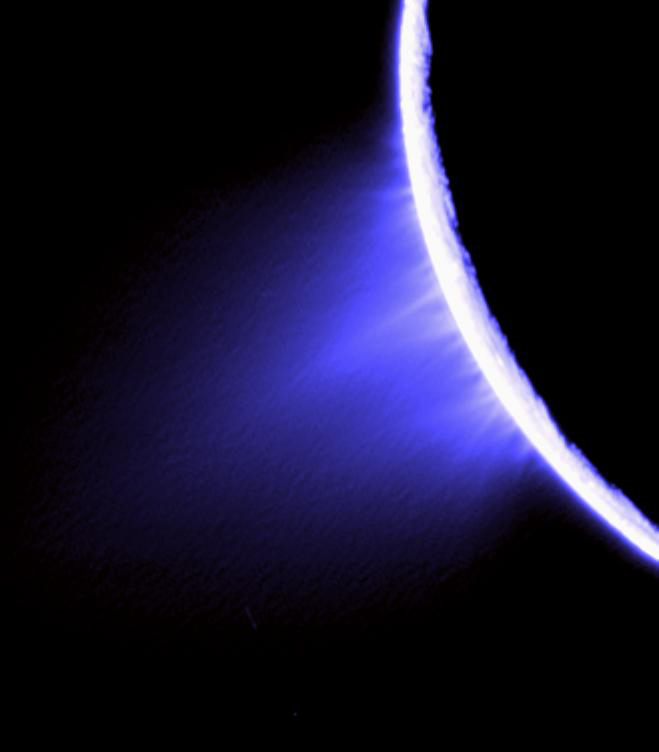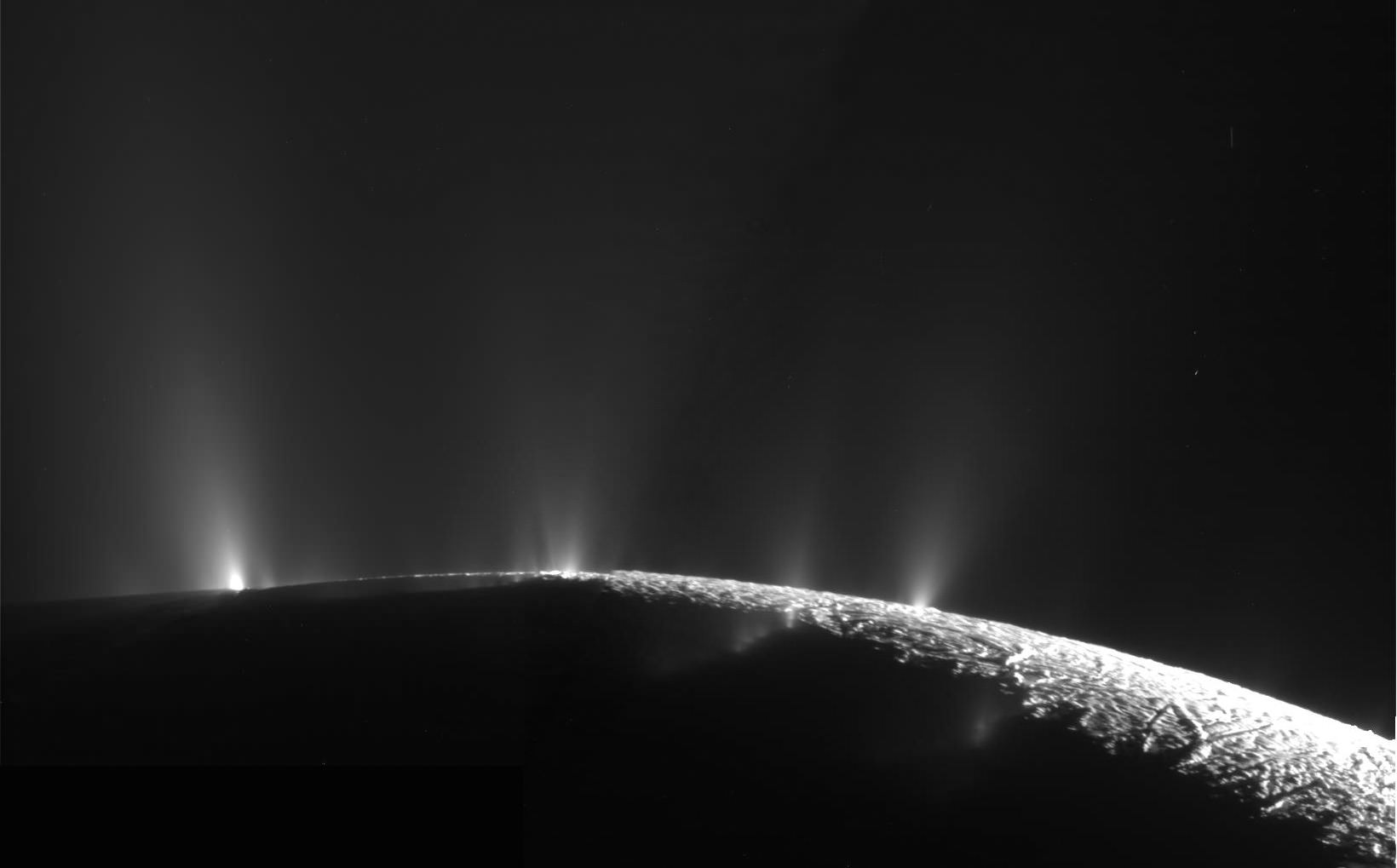A crowning achievement of the Cassini mission to Saturn is the discovery of water vapor jets spraying out from Enceladus‘ southern pole. First witnessed by the spacecraft in 2005, these icy geysers propelled the little 515-kilometer-wide moon into the scientific spotlight and literally rewrote the mission’s objectives. After 22 flybys of Enceladus during its nearly twelve years in orbit around Saturn, Cassini has gathered enough data to determine that there is a global subsurface ocean of salty liquid water beneath Enceladus’ frozen crust—an ocean that gets sprayed into space from long “tiger stripe” fissures running across the moon’s southern pole. Now, new research has shown that at least some of the vapor jets get a boost in activity when Enceladus is farther from Saturn.

By measuring the changes in brightness of a distant background star as Enceladus’ plumes passed in front of it in March 2016, Cassini observed a significant increase in the amount of icy particles being ejected by one particular jet source.

Named “Baghdad 1,” the jet went from contributing 2% of the total vapor content of the entire plume area to 8% when Enceladus was at the farthest point in its slightly-eccentric orbit around Saturn. This small yet significant discovery indicates that, although Enceladus’ plumes are reacting to morphological changes to the moon’s crust due to tidal flexing, it’s select small-scale jets that are exhibiting the most variation in output (rather than a simple, general increase in outgassing across the full plumes.)
“How do the tiger stripe fissures respond to the push and pull of tidal forces as Enceladus goes around its orbit to explain this difference? We now have new clues!” said Candice Hansen, senior scientist at the Planetary Science Institute and lead planner of the study. “It may be that the individual jet sources along the tiger stripes have a particular shape or width that responds most strongly to the tidal forcing each orbit to boost more ice grains at this orbital longitude.”
The confirmation that Enceladus shows an increase in overall plume output at farther points from Saturn was first made in 2013.
Whether this new finding means that the internal structure of the fissures is different than what scientists have suspected or some other process is at work either within Enceladus or in its orbit around Saturn still remains to be determined.
“Since we can only see what’s going on above the surface, at the end of the day, it’s up to the modelers to take this data and figure out what’s going on underground,” said Hansen.
Sources: Planetary Science Institute and NASA/JPL



Hi Jason. A nice detailed report.
Could the plumes that we’re seeing be surface particles being uplifted by an electrical circuit that is part of the Saturnian atmosphere?
We see this phenomena almost everywhere in our solar system, including similar jets on comets. We see the same thing, as a “volcano” on Io, the moon of Jupiter. Maybe nothing is going on under the surface.
https://www.thunderbolts.info/wp/2015/02/09/enceladus-is-not-at-fault-2/